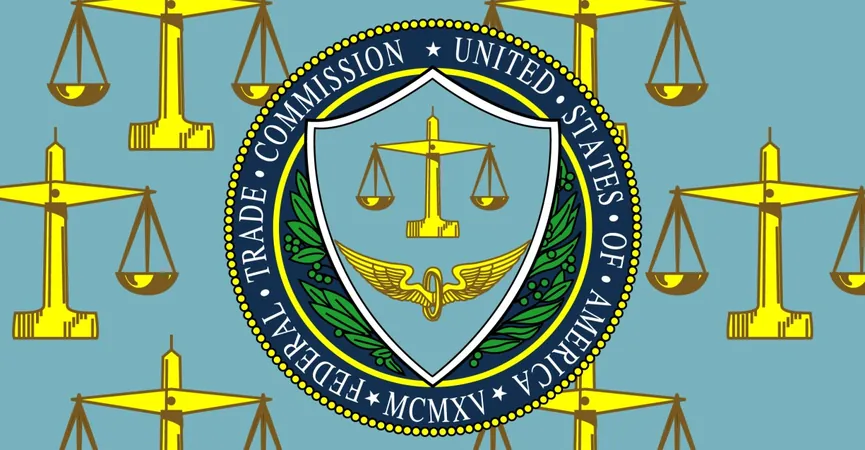
April’s Inflation Signals Mixed Messages Amid Economic Uncertainty
2025-05-31
Author: Ken Lee
Fed's Inflation Measure Remains Steady
In April, the Federal Reserve's favored inflation indicator showed stability as consumer spending appeared to wane. The Personal Consumption Expenditures (PCE) price index rose by 2.1% compared to a year prior, a slight dip from March’s 2.3%, inching closer to the Fed's goal of 2%. Month over month, prices rose minimally by 0.1% after experiencing no growth in March.
Core Inflation: A Glimpse into Economic Trends
Excluding fluctuating food and energy prices, the core PCE index increased by just 0.1% in April, bringing the annual growth to 2.5%, a slight decrease from March’s 2.6% increase. This core measurement is closely monitored as it reflects the underlying inflation trends.
Consumer Spending Takes a Hit
When adjusted for inflation, personal spending saw a modest rise of 0.1% in April, marking a substantial drop from March's 0.7% increase. Although personal income surged, it was mainly due to heightened Social Security payouts.
Trump’s Policy Turbulence Creates Economic Turmoil
This data emerged during a tumultuous time in U.S. trade policy, as President Trump unveiled and then rescinded aggressive tariffs that affected major trading partners after concerns in the bond markets. The volatility has left consumers and businesses feeling unsettled, complicating any predictions about future price rises or economic slowdown. Retail giants like Costco have indicated plans to stock up to sidestep tariff impacts, while Walmart has already hinted at possible price hikes.
Economic Outlook Clouded by Tariff Uncertainty
Many economists were expecting to see stronger price pressures in the coming summer months, but the ever-evolving nature of tariffs has led to shifting forecasts. 'We know there's a rise in prices imminent; we just can't quantify it yet,' expressed Stephen Stanley, Chief U.S. Economist at Santander.
Trade Data Indicates Significant Impact of Tariffs
Recent trade data has illustrated the tariffs' impacts starkly, with imports of daily goods plunging nearly 20% in April, marking the largest monthly drop on record. This decrease has drastically narrowed the goods trade deficit to about $88 billion.
Political Decisions Could Shape Economic Future
The ultimate impact of proposed tax cuts and spending reductions by Republicans remains uncertain. Plans for immigration enforcement could also restrict labor supply further complicating the employment market.
The Fed's Cautious Approach to Rate Cuts
The latest data reinforces the Fed’s cautious stance regarding potential interest rate cuts. With a strong labor market and still-low layoff rates, officials believe there's room to wait before making any significant policy changes. However, this wait-and-see attitude may put the Fed at odds with President Trump, who advocates for immediate cuts.
Business Resilience Amidst Economic Uncertainty
In a recent meeting, Trump cautioned Fed Chair Jerome Powell against the decision to delay lowering rates. Powell maintained his position that economic data would guide future monetary policies. Traders anticipate one rate cut this year, signifying reduced expectations compared to earlier predictions.
Concern Grows Over Labor Market Stability
Minutes from the Fed's May meeting indicate expectations of a slower growth trajectory and higher unemployment. With anticipated tariff-induced inflation looming, analysts warn of potential stagflation—a challenging environment for policymakers.
The Stakes for the Labor Market
Ed Al-Hussainy from Columbia Threadneedle Investments emphasized that if the labor market deteriorates, a strong case for aggressive rate cuts could emerge. However, he noted that, for now, a case can be made for maintaining the current course.




 Brasil (PT)
Brasil (PT)
 Canada (EN)
Canada (EN)
 Chile (ES)
Chile (ES)
 Česko (CS)
Česko (CS)
 대한민국 (KO)
대한민국 (KO)
 España (ES)
España (ES)
 France (FR)
France (FR)
 Hong Kong (EN)
Hong Kong (EN)
 Italia (IT)
Italia (IT)
 日本 (JA)
日本 (JA)
 Magyarország (HU)
Magyarország (HU)
 Norge (NO)
Norge (NO)
 Polska (PL)
Polska (PL)
 Schweiz (DE)
Schweiz (DE)
 Singapore (EN)
Singapore (EN)
 Sverige (SV)
Sverige (SV)
 Suomi (FI)
Suomi (FI)
 Türkiye (TR)
Türkiye (TR)
 الإمارات العربية المتحدة (AR)
الإمارات العربية المتحدة (AR)